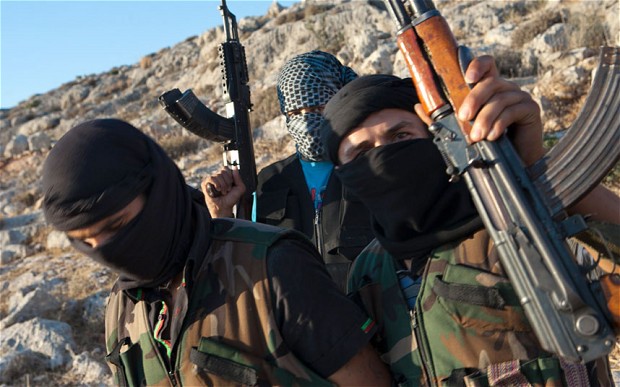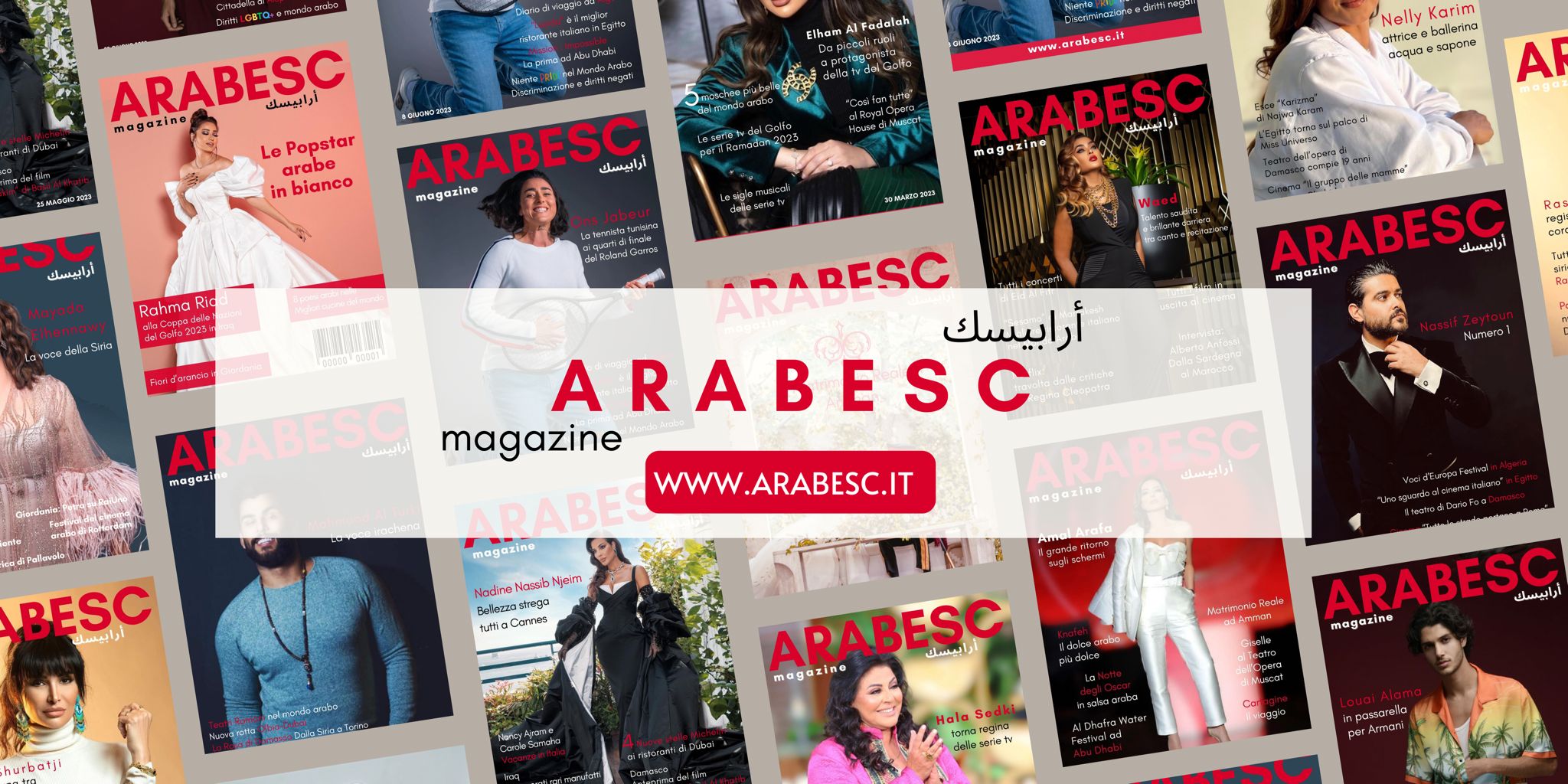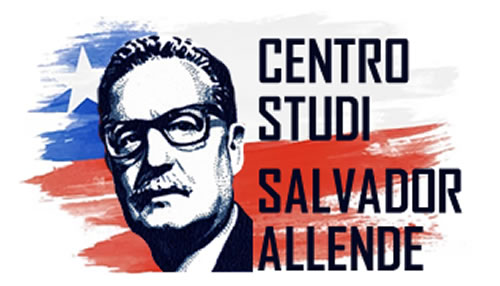
The jihadist pauses briefly from his snowball fight to address the camera.
“It’s not a horror movie here,” he says gleefully. Behind him his comrades sling their AK-47s as they laugh in the snowy Syrian grove. “We are not those so-called ‘evil salafists’. We can also have fun.”
The fighter is Denis Cuspert, a German rapper who went by the stage name Deso Dogg until he turned to Islamism and moved to Syria to take up jihad.
Cuspert is the kind of extremist who keeps Western security agents up at night: a charismatic convert who makes terrorism look glamorous and speaks in German as he exhorts fellow Europeans to take up arms.
“Look my dear brothers and sisters, this is jihad,” he shouts, gesturing at the carefree scene around him. “I invite you to join jihad!”
But the Youtube video ends on an unexpected note. Cuspert is lying on the floor, soaked in blood, as others try desperately to resuscitate him. The final frame is of the American flag and the Statue of Liberty.
The video was not produced in some terrorist lair but instead at the US State Department in Washington, where filmmakers spliced together the militants’ own footage with scenes of the bloody reality in Syria.
“His message was that jihad is basically a joy ride,” says Ambassador Alberto Fernandez, as he plays the video in his office. “Our task is to show that it’s not.”
Mr Fernandez is the head of the Center for Strategic Counterterrorism Communications (CSCC), an experimental unit of the State Department intended as America’s answer to the digital propaganda put out by al-Qaeda and other extremists.
The CSCC was created in 2011 and for the last three years its team of operators have worked in Arabic, Urdu and Somali as they trawl through the murky world of online jihad.
But its newer English language Twitter account has attracted the most attention, mainly for the spectacle of the US government arguing publicly on the internet with supporters of al-Qaeda.
Where most State Department Twitter feeds post only platitudes and rarely respond to other users, @ThinkAgain_DOS is caustic and high tempo and actively looks for places to start fights. (…)
“What we’re doing is very different from anything else in US government public communications,” says Mr Fernandez, a career diplomat and a fluent Arabic speaker. “Our goal is not to make people love the US. Our goal is to make al-Qaeda look bad.”
The ambassador describes his target audience as people in the “antechamber of al-Qaeda,” those sympathetic to jihad but who have not yet made the decision to turn to violence.
To reach that audience the State Department goes wherever the jihadist recruiters go, from Twitter to Facebook, Tumblr to Youtube. “The whole ethos is to contest the space. The extremists were there but no one was pushing back against them,” Mr Fernandez says. His team has recently been looking at expanding into Ask.fm, a social networking site popular with British Islamists.
The CSCC makes its case by attacking al-Qaeda for killing Muslims, belittling Osama bin Laden as a coward who sent others to die while he hid in Pakistan, and warning of the violent end that awaits would-be jihadists like Denis Cuspert.
(For the record: Cuspert survived the injuries shown in the State Department’s Youtube video but is reported to have been killed last month by a suicide bomber from a rival jihadist faction.)
The State Department, however, avoids getting into debates about whether the Quran can justify violence. “We don’t feel its effective for the US government to be talking about religion,” says Mr Fernandez.
But is there value to this strategy of aggressive public engagement? Can snarky tweets and Youtube clips actually stop real-world violence?
John Rosenthal, an Al-Monitor contributor who covers European jihadist networks and the Syrian war, doubts it. “If their goal is convincing people not to join jihad then I imagine their success rate is going to be zero,” he says.
The CSCC’s output is all proudly branded as official US government material, complete with American flags and the State Department seal. Critics argue this overt approach means its works will be dismissed out of hand by exactly the people it is trying to reach.
Even if potential jihadists take a serious look at the CSCC’s messaging it is unlikely to resonate, says Mr Rosenthal. He points to the State Department’s habit of illustrating al-Qaeda’s brutality with gruesome images of beheadings and executions. “Jihadist online propaganda is itself full of such images. For the jihadists, these are selling points.”
In an unscientific test, The Telegraph emailed several of the Islamist Twitter users who had crossed swords online with the State Department in recent weeks to ask whether the back and forth had changed their thinking.
Most refused to talk but one man, who had argued with the CSCC about Syria and identified himself as Herman Sholef, sent back a scornful reply.
“The [CSCC Twitter account] is just a joke comedian acting like a clown for the real jihadi,” he said, suggesting that it was in fact raising the profile of the extremists it tangled with. “One mention and you get more followers. Who doesn’t like free marketing?”
In purely numerical terms the jihadists also seem to have the upper hand. The CSCC’s most popular Twitter account, which focuses on Pakistan, has fewer than 6,000 followers while many of its opponents boast tens of thousands.
The CSCC retains the support of both Rick Stengel, the former editor of Time who is now the State Department’s undersecretary for public diplomacy, and Ed Royce, the Republican chair of the House foreign affairs committee, which oversees its $5 million budget.
In a statement, Mr Royce said that aggressively confronting al-Qaeda online “must be a fundamental part of overal US counterterrorism strategy”.
![]() We are in a battle of ideas with extremist ideologies. The CSCC is battling, though on a relatively small scale. Its successes are often challenging to measure and incremental, while its failures are visible. The Committee will keep pressing the Administration to make CSCC efforts a priority, because bottom line, extremism is growing.”
We are in a battle of ideas with extremist ideologies. The CSCC is battling, though on a relatively small scale. Its successes are often challenging to measure and incremental, while its failures are visible. The Committee will keep pressing the Administration to make CSCC efforts a priority, because bottom line, extremism is growing.”
In his office in Washington, Ambassador Fernandez acknowledges that in a war of words it is difficult to give metrics of success. “The holy grail would be someone saying ‘I was a terrorist but I changed my mind because of you.’ I don’t have a firm example of that,” he says.
Instead, he offers a dozen examples of what he says are signs that the online jihadists are rattled by the CSCC’s work.
In July 2013, a prominent al-Qaeda supporter, @Al_Bttaar, organised an unsuccessful spamming attack on the State Department’s Arabic language account. Five months later, Syrian jihadists tried again, warning that the account was trying to instigate fitna, an Islamic word for strife, between its fighters.
Above all, Mr Fernandez argues that the CSCC is contesting a digital and ideological battlefield that would otherwise be ceded to the jihadists and their supporters.
“This is some of the most difficult, dangerous ungoverned space of all,” he says. “We can’t just leave it to the enemy.”













 e poi
e poi